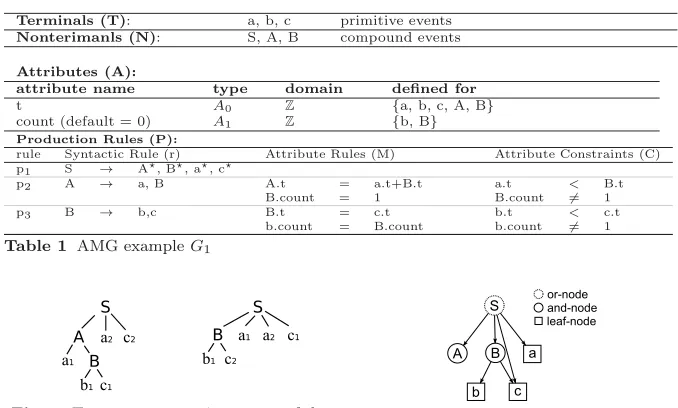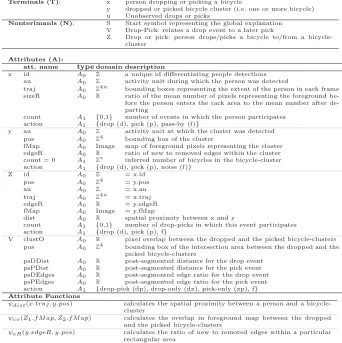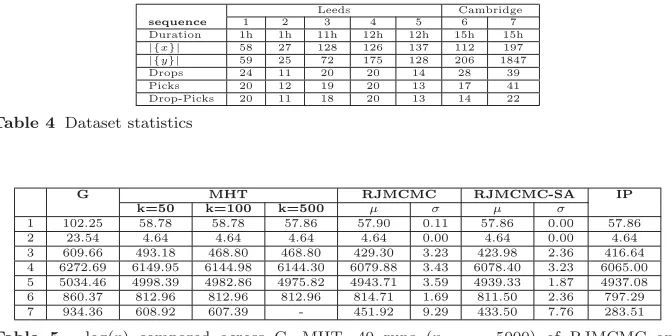Explaining Activities as Consistent Groups of Events: A Bayesian Framework Using Attribute Multiset Grammars
Full text
Figure




Related documents
Different green communication techniques including Device-to-Device communication (D2D), massive MIMO, Heterogeneous Networks (HetNeTs) and Green Internet of Things
Experiments were designed with different ecological conditions like prey density, volume of water, container shape, presence of vegetation, predator density and time of
Finally, HRM issues, even when strategic, are considered by top management to strategy implementation phase and not strategy formulation phase (Russ et al. , 1998) study
A total of 33 cases suspected for neoplastic growths were screened by cytological and histopathological procedures and 29 cases werediagnosed as tumors.Results of
2011 Advanced Methods in Tobacco Control , Johns Hopkins Bloomberg School of Public Health Baltimore, MD.. 2011 Qualitative Methods in Tobacco Control , Johns Hopkins Bloomberg
ABSTRACT : Aiming at the poor dynamic performance and low navigation precision of traditional fading Kalman filter in BDS dynamic positioning, an improved fading
Perhitungan uji hipotesis secara parsial didapatkan nilai t hitung suku bunga yaitu sebesar 0,924649 lebih kecil dari t tabel sebesar 2,36462 dengan tingkat signifikansi sebesar
This article offers a modest contribution to examining historical aspects of urban tourism in the less well researched cities of the global South by interpreting the





